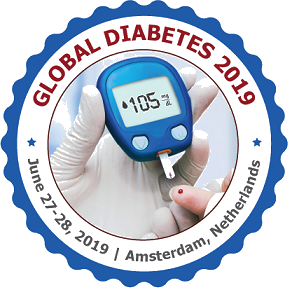Francesco Lippi
University of Pisa, Italy
Title: Differentiated thyroid cancer and radioactive iodine therapy
Biography
Biography: Francesco Lippi
Abstract
Thyroid cancer is represented in most cases by differentiated thyroid carcinoma (DTC) (papillary or follicular), although the histological prevalence is papillary (90%). DTC is not particularly frequent, affecting only one in 25,000 people in Europe but increasing in the world, and has a higher incidence in women than in men (ratio 3-5:1). The DTC is asymptomatic, since in the great majority of cases the thyroid function appears normal. Secondary lymphadenopathy may rarely occur as a first event. Therefore the prevention, in particular the palpation and the ultrasound of the neck, becomes particularly important. A first cause is the area of origin (iodine deficiency). Another ascertained cause is the previous irradiation on the neck in pediatric age for benign pathologies. Other causes are the familiarity and genetic predisposition. It’s often the same patient who becomes aware of a swelling in the neck region. However, many of the nodules are so small in size that they are not discovered by the patient or the doctor, but require an adequate instrumentation (ultrasound). As soon as a thyroid nodule is discovered, it is advisable to carry out a specialist examination, blood test to measure serum FT3, FT4, TSH, anti-thyroglobulin antibodies and anti-thyroperoxidase (AbTg and AbTPO), and calcitonin (Ct). Following this phase, the neck ultrasound study follows. Often the ultrasound finding can already be suggestive of a suspicious nodule due to the presence of "spray" microcalcifications or to an incomplete halo sign or an increase in intra-nodular vascularity. The examination that still allows the diagnosis is the fine needle aspiration biopsy with cytological examination and international classification. In case of DTC, surgical therapy (total thyroidectomy) was generally followed by radioiodine therapy (RIT) which allows the elimination of residual thyroid tissues (ablation) and reduces the recurrences. Recently the new anatomopathological staging has reduced the RIT. Therefore, both papillary microcarcinoma and multifocal carcinoma, and papillary carcinoma with focal infiltration of the peri-thyroid soft tissues, are not treated with RIT if there are not different variants to the classical one. However, there are still authors who continue to treat patients (except microcarcinoma) still with RIT. This therapy can be performed both in conditions of hypothyroidism, or more recently without therapy withdrawal, but in euthyroid status after stimulation with recombinant human TSH. Moreover, the high serum TSH it’s the condition necessary for the thyroid cells stimulation, both for the production of thyroglobulin (Tg), and for the ability to concentrate radioiodine. The percentages of ablation and therefore of remission of the disease vary between 90 and 98% depending on the series published. RIT is followed by total body post-therapy scintigraphy that allows the visualization of radioactive iodine concentration in the body. About 10-15% of patients need an additional dose of radioiodine to complete the ablation of thyroid residues, while, in a small percentage of patients, for local or distant metastases or for detectable serum Tg levels

